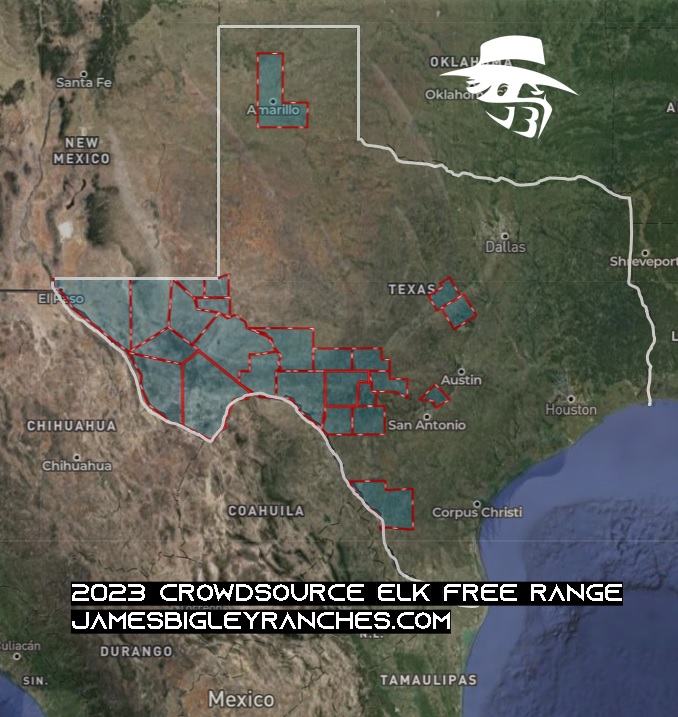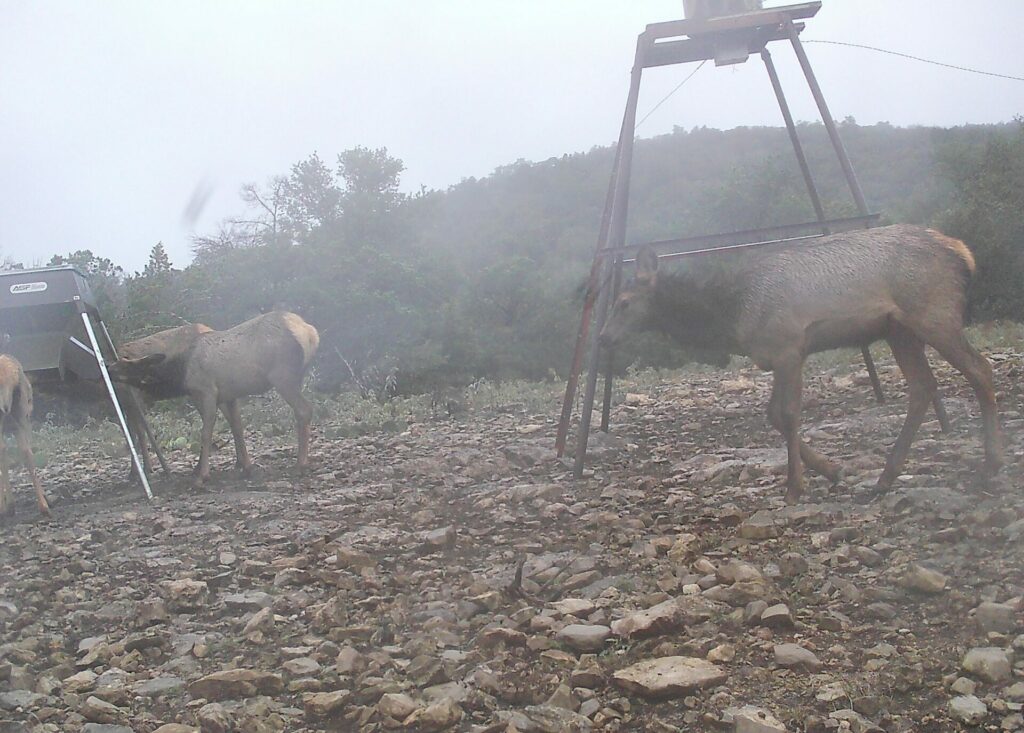Texas Elk Range - Live interactive mapping, free range, updated Jan 1 2024
Map Legend: Black Triangle = Historical Elk Physical Evidence, White triangle = Elk Petroglyphs, Red Star = Recent Elk Sightings Out of Range, Blue Covered Counties = Current Elk Free Range (Source: Pitchstone Waters)
Elk In Texas: Really?

Elk Originally Inhabited Texas:
The majestic elk, also known as Cervus canadensis, is a popular species that roams across North America. However, their history in Texas is not so straightforward. According to the Texas Parks and Wildlife Department (TPWD), elk were present in Texas prior to European settlement in the 1800s. Evidence suggests that bighorn sheep and elk were found west of the Pecos River and other areas of Texas.
According to an extensive study by Dr Richardson Gill of Pitchstone Waters we quote:
“The available eyewitness accounts in every part of the state, the presence of elk bones and coprolites in archaeological contexts, and elk antlers on the surface of the ground convincingly establish that elk were native to Texas. In addition, the pictographs, the petroglyph, and the place names, while not conclusive in and of themselves, lend additional corroboration to the presence of elk in Texas. (Elk need the same protection as other native game species.)
When we sited the various pieces of evidence on a Texas map, it convincingly shows that native elk were once widespread across the state, and not limited to one small area of West Texas.
However, both species were eradicated due to hunting and diseases from domesticated animals. It wasn’t until the 1920s that elk were reintroduced into Texas by private landowners. The TPWD also played a role in elk reintroduction efforts. By the 1960s, bighorn sheep were also reintroduced to West Texas. However, elk were reclassified as non-game or exotic species in 1997 due to concerns about their impact on bighorn sheep populations.”
We agree with the thorough study of Dr Gill that Elk originally inhabited most of Texas and not just the Guadalupe Mountain range.

Elk Habitat:
According to the Texas Tech University Natural Science Research Laboratory, elk can adapt to a variety of habitats and have been known to thrive in Texas. Elk prefer to inhabit areas with a mixture of forested land and meadows, making the Texas Hill Country and other parts of the state suitable for their survival. Elk original habitat were plains and not mountains, based off pressure from settlement they changed their habits. Pitchstone Waters, a land and wildlife management company, argues that elk are indeed native to Texas based on historical evidence of their presence in the state prior to the arrival of European settlers.
Hunting Elk In Texas:
At this time Elk are considered a non game species in the State of Texas. With a hunting license, hunters are able to hunt Elk year round without any bag limits. Per TPWD:
“An exotic animal is any animal that is not indigenous to Texas, including but not limited to aoudad sheep, axis deer, elk, sika deer, fallow deer, red deer, and blackbuck and nilgai antelope. An exotic fowl is any avian species that is not indigenous to Texas and is also not protected by the federal Migratory Bird Treaty Act, including but not limited to ratites (emu, ostrich, rhea, cassowary, etc.). Hunting License required.”
Do Hybrid Elk Exist:
Yes, although sporadic data in the United States, elk hybrids are well documented in New Zealand. Related to the US according to an article from Deseret News out of Montana (1994) confirmed cross breeding of elk and European red deer from a test conducted of free range elk. There are a ton of rumors related to hybrid elk in Texas, but there are no studies (That we know of) that prove this is the actual case. Link to the article go here: Deseret News
Conclusion:
Despite their complicated history in Texas, elk are a unique and valuable addition to the state’s wildlife population. The TPWD allows hunting of elk on private lands, and some ranches even offer guided elk hunting experiences. With careful management and conservation efforts, elk populations can continue to thrive in Texas for generations to come.



